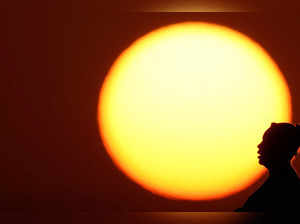 AP
APJust like human beings, have you ever thought of the Sun experiencing its form of a ‘heartbeat’? Researchers from a German University have pointed out what seems like a tide-like cycle that ebbs and flows for 11 years, which is similar to a period of the solar cycle. This research took place at the Helmholtz Centre in Dresden Rossendorf and has now been published in Solar Physics.
These arguments have been well supported but have not been accepted within the scientific community. People have studied how the planets affect the Sun. However, the Sun is incredibly tough to study as it involves large amounts of finances and technical expertise. Research papers act as a stepping stone for other research but will need to be peer-reviewed.
It was the ninth planet of the solar system. In 2006, the International Astronomical Union delisted it as a planet.
What is the Kuiper Belt?
This region is found beyond the planet Neptune. It is a doughnut-shaped icy body that is seen beyond the last planet of the solar system.
What does the theory say?
The sun does not have a solid mass. Instead, it has its white-hot gas and plasma, the vast majority of which is hydrogen. Its magnetic field is created by its spinning effect which is known as the solar dynamo. It is a well-known fact that planets are pulled by the Sun towards it but are held back in their orbit due to gravity exerted by it. This theory now stipulates that even the planets which may seem small on a relative basis in the solar system also exert their pressure on the Sun and try to pull it back. Jupiter which has 11 times the diameter of the Earth and 318 times the mass of the Earth is the biggest culprit which pulls the Sun towards it. What is also known is that even the Earth and Venus also exert their influence.Shortest solar cycle
The sun cycle lasts for 11 years and this has been explained by the spring tides of Venus, Earth, and Jupiter that can excite the magneto-Rossby waves. Occasionally, these planets line up and exercise their combined gravitational influences. This may hold the explanation for the shortest solar cycle which is 11 years.These arguments have been well supported but have not been accepted within the scientific community. People have studied how the planets affect the Sun. However, the Sun is incredibly tough to study as it involves large amounts of finances and technical expertise. Research papers act as a stepping stone for other research but will need to be peer-reviewed.
FAQs:
Is Pluto a planet?It was the ninth planet of the solar system. In 2006, the International Astronomical Union delisted it as a planet.
What is the Kuiper Belt?
This region is found beyond the planet Neptune. It is a doughnut-shaped icy body that is seen beyond the last planet of the solar system.
Disclaimer Statement: This content is authored by a 3rd party. The views expressed here are that of the respective authors/ entities and do not represent the views of Economic Times (ET). ET does not guarantee, vouch for or endorse any of its contents nor is responsible for them in any manner whatsoever. Please take all steps necessary to ascertain that any information and content provided is correct, updated, and verified. ET hereby disclaims any and all warranties, express or implied, relating to the report and any content therein.
(Catch all the US News, UK News, Canada News, International Breaking News Events, and Latest News Updates on The Economic Times.)
Download The Economic Times News App to get Daily International News Updates.
Read More News on
(Catch all the US News, UK News, Canada News, International Breaking News Events, and Latest News Updates on The Economic Times.)
Download The Economic Times News App to get Daily International News Updates.





